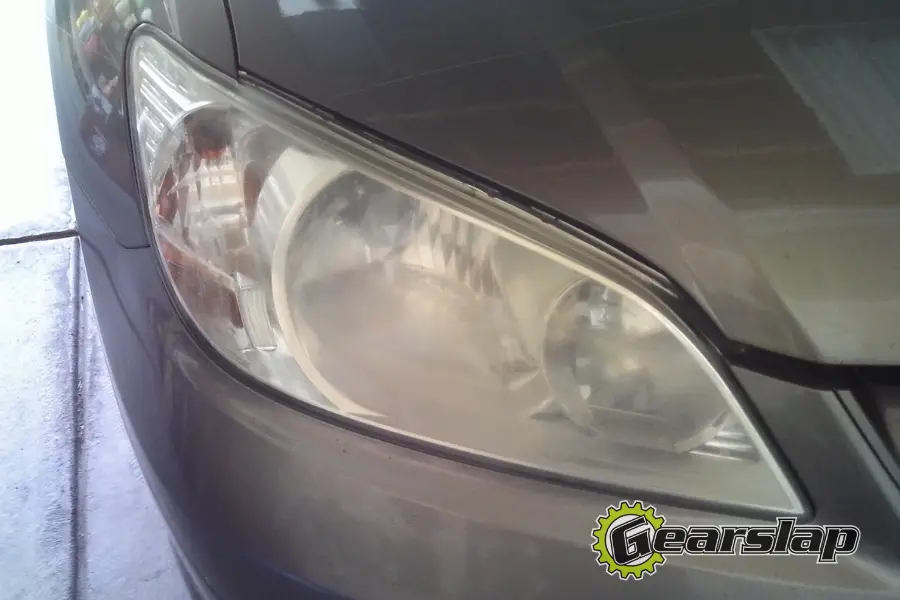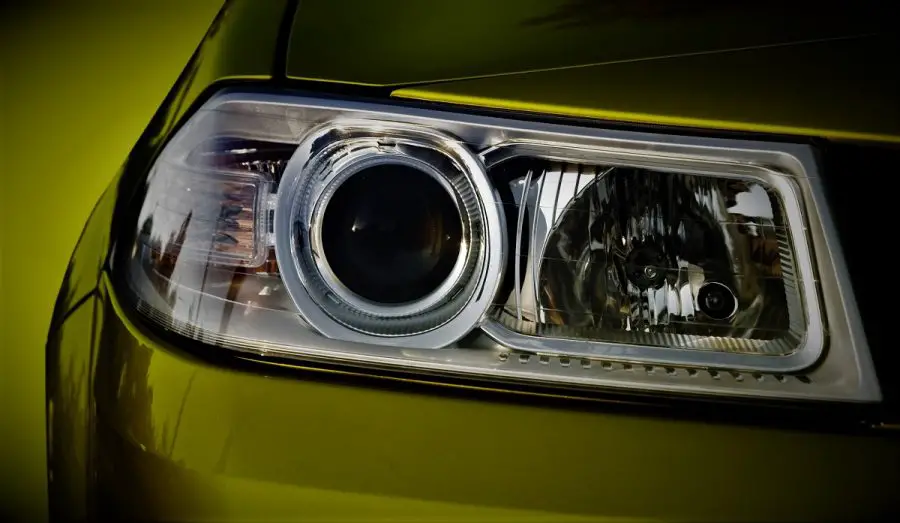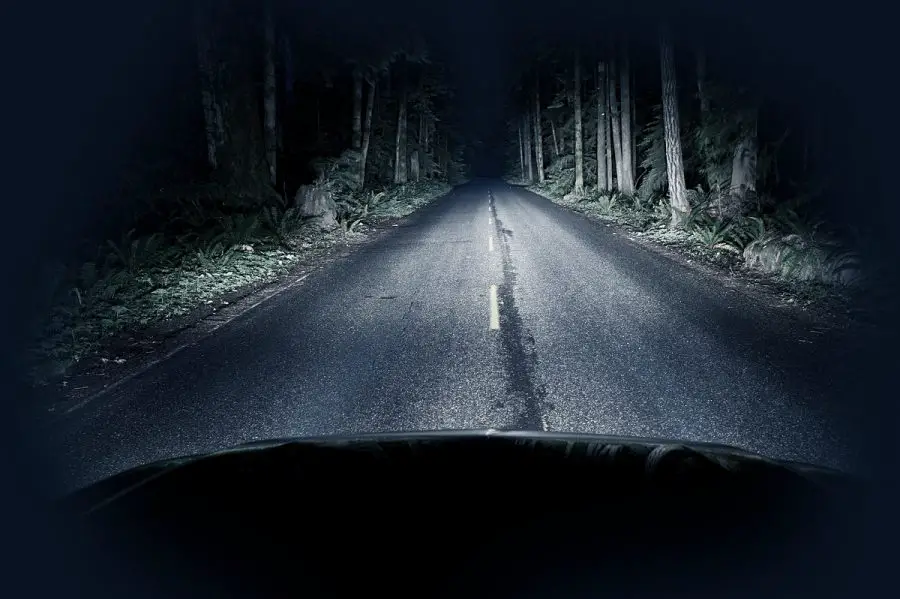Headlights have a tendency to turn yellow and cloud up over time and reduce the quality and amount of light that is emitted through them. It’s the result of oxidation due to exposure to ultraviolet (UV) light. Yellow headlights are not only unsightly, they also make it more dangerous to drive at night. Here’s a look at why headlights turn cloudy and yellow, and what you can do about it.

What are most headlight covers made of?
Most headlight covers are made of polycarbonate plastic and coated with a UV protective film to keep them clear. This film is usually the same as the film that’s used to protect the paint of your car. You might have expected the covers to be made from glass, but the amount of glass needed for modern car headlights would be heavy and expensive. Polycarbonate works just as well as glass and is much lighter.
Why are my headlights cloudy?
As previously mentioned, oxidation is the major cause of cloudy headlights. Other causes include water vapor inside the headlight unit, dirt and chemicals from the environment, and road damage from debris kicked up by passing cars.
How oxidation happens
A car’s headlight covers are exposed to the elements 24/7/365 unless kept in a garage. Over time, the protective coating breaks down and exposes the polycarbonate material to the ravages of pollution and the damaging effects of UV light. Keeping your car in a garage only serves to slow down the oxidation process. Eventually, the polycarbonate material develops cracks that cause the headlight covers to look cloudy.
What is hazing or crazing?
Hazing or crazing refers to a cloudy or cracked appearance on the headlight covers. The aforementioned cracks can be so small that they’re not visible as cracks, but look like a haze has covered the cover. Crazing is the result of cracks that formed when the light cover was hit by a large rock or road debris. It can also describe the appearance of large crackles on the surface of the headlight cover.
What causes headlights to turn foggy?
It’s important to note the distinction between cloudy and foggy when it comes to headlight covers. The exterior of the cover gets cloudy while the interior fogs up. Fog happens when the gasket dries out or there’s a break somewhere in the unit that allows moisture to get in. The heat from the car and light makes the water turn into a fog that coats the inside of the cover.
Why do car headlights turn yellow?
You might be asking the question of “does the sun make my headlights yellow” when it comes to the yellow color of the headlights. The sun itself doesn’t directly make the headlight covers yellow, but it does play a role in their deterioration. UV protective films and polycarbonate are typically made from petroleum by-products. These materials degrade in the presence of UV light and turn yellow over time.
In answer to the question of “does the sun make my headlights yellow”, the answer is yes. Just not in the way you think it does.
Are foggy headlights dangerous?
The short answer to the question is yes. Foggy headlights are dangerous, but you may not notice just how dangerous they are until they show obvious signs of oxidation. The crazing and fogging will develop over time and slowly reduce the amount of light that’s visible from your headlights. You’ll notice that you can’t see as far when you’re driving at night, and it’s harder to detect objects and animals standing at the side of the road.
A clear, non-yellowed light cover lets light pass through without impedance. That is, the light you see in front of you is clear and bright, and illuminates everything around you with clarity. As the cover oxidizes, the light that can pass through becomes scattered and diffused. The end result is a beam of light that is less focused, dim, and doesn’t reach as far.
Should I get my cloudy headlights fixed?
You should definitely get your headlights repaired or replaced. The headlights on your car are what keep you safe as you drive in low-light conditions and darkness. Driving around with cloudy headlights reduces your field of vision, and if you require glasses to correct your eyesight, you’re putting yourself at a higher risk of an accident when driving at night.
Another reason for getting your headlights fixed is the fact you can get fined for driving around in an unsafe vehicle. Headlights are an intrinsic part of your ability to operate your car in a safe fashion, and cloudy headlights are considered a risk to your safety and the safety of others. Getting a citation for an unsafe vehicle usually results in a fine along with the cost of repairing your headlights. Don’t take the chance of a ticket and get your headlights fixed when you notice the covers are cloudy.



